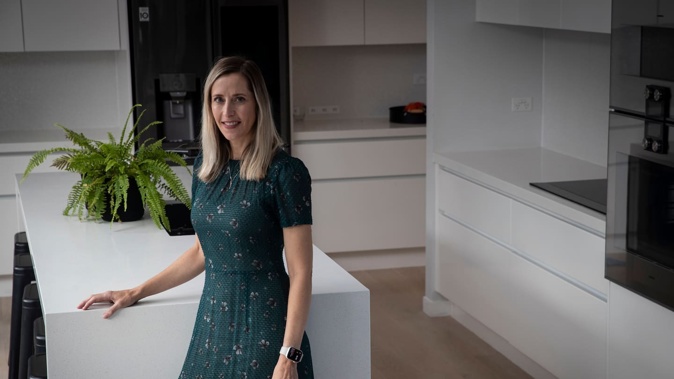
Doctors have called on the Government to follow Australia’s lead and ban or rigorously control the popular benchtop material engineered stone, over links to the incurable lung disease silicosis.
The Royal Australasian College of Physicians (RACP), which trains and advocates for more than 30,000 physicians, warns the lives of New Zealand tradies are at risk because regulation of engineered stone here is lagging behind.
The college has written to Prime Minister Christopher Luxon, Workplace Relations and Safety Minister Brooke van Velden and other political parties, asking for a total ban on engineered stone, or much stricter controls on importers and fabricators.
It also wants an official registry of people who have been exposed to silica dust.
“We are currently failing to respond to a health crisis that is entirely preventable – the Government must act now to stop ongoing serious health harms from engineered stone, just as they needed to act urgently with asbestos,” said Dr Alexandra Muthu, RACP spokeswoman and the co-chair of a “national dust diseases taskforce” that advises the Government.
Engineered or artificial stone dominates the kitchen and bathroom benchtop industry, but in July will be banned outright in Australia, to protect stonemasons from exposure to respirable crystalline silica (silica dust), which can be generated when workers cut, shape or polish the material.
Dust from engineered stone is considered more dangerous, because the man-made products have traditionally contained up to 95 per cent silica, compared to 2 to 50 per cent in natural stones.

Engineered stone should not be cut dry, because of the risk silica dust poses when breathed in. Australia will from July ban all engineered stone, regardless of silica content levels. Stock photo / 123rf.com
Repeated, occupational inhalation of even very small amounts of dust has been linked to the lung disease silicosis and other serious conditions including cancer and heart disease.
A number of tradies in Australia have died horrible, early deaths. Others are debilitated from symptoms including shortness of breath.
The number of confirmed silicosis cases in New Zealand is far smaller - as of last year, 190 people lodged claims for assessment, with four accepted for probable accelerated silicosis, and others covered for conditions including chronic silicosis. There have been no confirmed deaths.
Documents released to the Herald under the Official Information Act show that two days after Australia confirmed a world-first engineered stone ban the biggest fabricator in NZ, AGB Stone, wrote to Van Velden.
The company, which has had what it calls “very minor” issues picked up in a WorkSafe inspection of its Cromwell factory, told the minister it was moving to engineered stone with an average of 30 per cent silica, and stone with as little as 15 per cent silica was being developed.
Banning higher silica products and making a current voluntary industry accreditation scheme - which requires safety measures including ventilation and wet-cutting of stone to avoid dust - compulsory with proper monitoring would help ensure a “safe and sustainable” industry, the company argued.
Australia opted to ban even lower-silica engineered stone, after the government agency Safe Work Australia concluded, “there is no toxicological evidence of a ‘safe’ threshold of crystalline silica content”.
RACP supports that position. If a total ban isn’t introduced here, Muthu said extremely strict conditions, monitoring and certification must be introduced, which she expected could reduce the industry to a handful of companies.
She said that might, for example, require investment in CNC machines which completely enclose the fabrication process in robotic equipment. Current safety measures like wet-cutting and high quality respirators aren’t enough, she said.
“Even with safety measures in space and in place, such as water suppression, there can be a big spike in the airborne silica duct.”

Prime Christopher Luxon (left). Workplace Relations and Safety Minister and Act MP Brooke van Velden (right) is due to receive advice from officials on regulatory options for engineered stone. Photo / Mark Mitchell
Muthu, a leading occupational physician, estimates up to 1000 former and current stonemasons are at risk and said that, like with asbestos dust, some silica-dust diseases take years to develop after exposure and the real toll will not be known for decades.
“The people I have met who have significant accelerated silicosis… they are people in their late 20s to early 40s, they are finding it difficult to breathe, difficult to live life - they can’t keep up with their children.
“Accelerated silicosis is going to be the first serious disease we see. But in five or 10 years we could be having a different conversation about all these cancers that we know can develop.”
WorkSafe investigations have found widespread safety failures at workshops where imported slabs of stone are cut, polished and shaped, and an ongoing Herald investigation has found gaps in oversight of the industry.
Clinical experts had not been involved enough in the official response or funded for the work they have done voluntarily, Muthu said, and “workers continue to be exposed to dangerous dusts every day”.
“Respirable silica dust particles are invisible to the naked eye, but for exposed workers they can lead to an early death. Silicosis is an irreversible, debilitating and potentially fatal lung disease that no one should have to suffer through when it is entirely within the power of the Government to prevent it.”
Any ban would not be a panacea, Muthu said, and New Zealand needed to better protect people from workplace disease and sickness, through the establishment of a national occupational health unit, and a chief clinical adviser in occupational health to the Minister of Workplace Relations and Safety.
Officials here are preparing advice on regulatory options for engineered stone for Van Velden, which her office told the Herald will include advice on a registry and is expected shortly.
Labour’s spokeswoman for workplace safety, Camilla Belich, said the party wanted to see that advice before deciding its position on a ban.
HELP US INVESTIGATE
If you can help us shed light on this issue, contact investigative reporter Nicholas Jones by email: [email protected]
We will not publish your name or identify you as a source unless you want us to.
Nicholas Jones is an investigative reporter at the Herald. He won the best individual investigation and best social issues reporter categories at the 2023 Voyager Media Awards.
Take your Radio, Podcasts and Music with you









